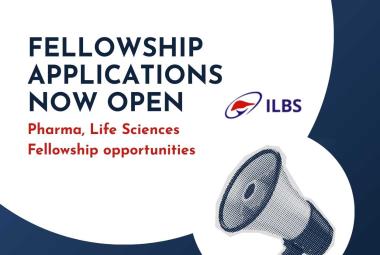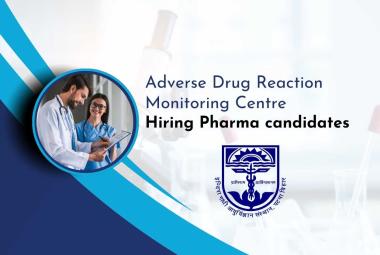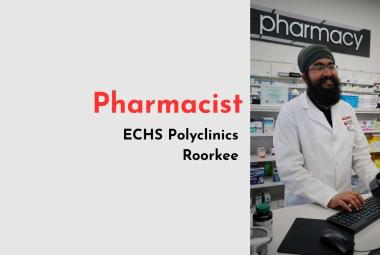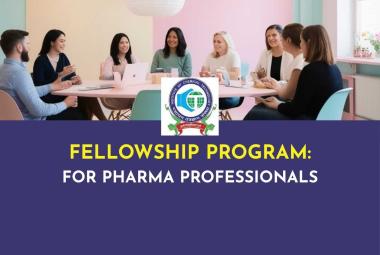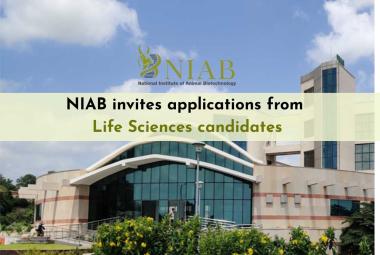{ DOWNLOAD AS PDF }
ABOUT AUTHORS:
Somaia El-saedi1, Jamal S Mezogi1, Abdulrhman A. Akasha2*
1Department of Pharmacognacy
2Department of Pharmaceutics
Faculty of Pharmacy, Tripoli University, Libya,
Akashaabdu@yahoo.co.uk
ABSTRACT
Development of new drugs, especially in the area of oncological and infectious disease represents today one of the most important research fields. The marine environment is a tremendous source of natural products. Many new compounds isolated from marine micro- and macroorganisms showed prominent biological effects, mostly antibiotic and cytotoxic activities. The current study aimed to investigate pure compounds which were isolated from marine-derived fungi. The study was preformed with fractions from two marine derived fungal strains, i.e. Verticillium teneru and Acremonium sp. The isolation of the desired secondary metabolites was carried out using different chromatographic separation techniques (TLC, VLC and mainly HPLC). Chemical and spectroscopic methods (1D NMR, 2D NMR, MS, IR and UV) were applied for structural elucidation of the separation compounds. Extracts of two algal-derived fungus strains with high cytotoxic properties, were investigated chemically. This investigation resulted in the isolation and structure elucidation of three pure compounds representing different structural sub-classes, one of them 1 proved to be new natural products and two were known compounds2 & 3.
REFERENCE ID: PHARMATUTOR-ART-2292
INTRODUCTION
Traditionally, plants and terrestrial microorganisms have been in the focus for search of new drug candidates from nature [1]. However, three quarters of the earth’s surface is occupied by seas and oceans. Their resources are varied and vast, partly comprising fungi, bacteria, fish, shellfish, algae, sponge and other animals. There increasingly attract attention due to their unique structures, pharmacological activity and potentially useful properties [2].
Since marine organisms live in a significantly different environment compared to those from terrestrial organisms, it is reasonable to suppose that their secondary metabolites will also differ considerably [3] [4].
Many marine species have been assayed for their bioactivity and a number of bioactive molecules with unique structural features have been isolated [4] [5]. The rapid growth of research to the chemistry of marine organisms over the last five decades has led to the discovery of a surprisingly large number of novel structures. Marine microorganisms particularly fungi and bacteria are of considerable current interest as new promising sources of bioactive substances. Marine microorganisms have proven to produce a variety of chemically interesting and biologically significant secondary metabolites and some of them are expected to serve as lead compounds for drug development or pharmacological tools for basic studies in life sciences as reported in the last decade [6]. Some of these metabolites, referred to as toxins, are compounds that have the potential to kill an organism at concentration we might use.
The present study deals with the investigation of some marine fungal strains, derived from marine algae, and aims at finding natural products with new biological activity and/or novel chemical structures.
MATERIALS & METHOD
Isolation from algal material
After sterilization of the algal material with 70 % ethanol, algal samples were rinsed with sterile water and pressed onto agar plates to detect any residual fungal spores on their surface. Sterilized algae were then cut into pieces aseptically and placed on agar plates containing four different isolation media. All isolation media were prepared using artificial seawater (ASW), and were autoclaved prior to use. After evaporation of the organic solvent (EtOAc), the crude extract was subjected to fractionation by using normal phase vaccum liquid chromatography (NP-VLC), a gradient solvent system with PE-acetone-MeOH was used in different ratios:
(a) For Verticillium tenerum, were PE:Acetone (10:1, 5:1, 2:1, 1:1) then100 % acetone and followed by 100 % MeOH, and yielded which 6 fractions.
(b) For Acremonium sp., was PE:Acetone (10:1, 5:1, 2:1, 1:1) then 100 % acetone and followed by 100 % MeOH to yield 7 fractions.
Chromatography
Thin layer chromatography (TLC)
TLC was carried out using either TLC aluminium sheets (20 x 20 cm) silica gel 60 F254 (Merck) or TLC aluminium sheets (20 x 20 cm) RP-18 F254s (Merck) as stationary phase. Standard chromatograms of fungal extracts and fractions were prepared by applying 20 µL of solution (5 mg/mL) to a TLC plate and using PE/acetone or MeOH/H2O mixtures as mobile phases under saturated conditions. Chromatograms were detected under UV light (254 and 366 nm), and with vanillin-H2SO4 (0.5 g vanillin dissolved in a mixture of 85 ml methanol, 10 mL acetic acid and 5 mL H2SO4, TLC plate heated at 110°C after spraying) giving colored spots on a white plate.
Vacuum liquid chromatography (VLC)and Solid phase extraction (SPE)
VLCwas carried out using silica gel 60 (0.063-0.200 mm, Merck). Columns were filled with the appropriate sorbent, compressed under vacuum and soaked with PE or MeOH. Before applying the sample solution, the columns were equilibrated with the first designated eluent.
High performance liquid chromatography (HPLC)
HPLC was performed on the system equipped with a Rheodyne 7725i injection system, a Waters 515 HPLC pump, a Knauer RI detector K-2300 and a Linseis L 250 E recorder. Columns used were:
a : Knauer Eurospher-100, C-18, 250 x 8 mm, 5 µm (Semi preparative)
b : Knauer Si Eurospher-100, Si, 250 x 8 mm, 5 µm (Semi preparative)
c : Phenomenex Aqua C-18 125Å, 250 x 4.6 mm, 5 µm (Semi preparative)
d : Phenomenex C-18(2) 100A, 250 x 4.6 mm, 5 µm (Semi preparative)
Typical flow rates were from 0.6 to 2.3 mL/min. All solvents, were distilled prior to use. The eluents were degassed under reduced pressure.
Structure elucidation
Structures were elucidated mainly using one and two dimensional NMR techniques and various MS methods. Furthermore optical rotation and UV parameters as well as IR properties provided additional information. Additionally, calculated NMR data of the assumed structures with ACD software helped to elucidate most structures. Identity of isolated compounds with compounds reported in literature was stated, based on 1H NMR and 13C NMR, spectroscopic data, and specific optical rotation. Based on literature searches, using the MarinLit database, Sci Finder-database and Antibase, the structures were designed as known or as new.
Biological screening
Agar diffusion assay
Antimicrobial tests of extracts and pure compounds were performed by E. Neu, Institute for Pharmaceutical Biology, University of Bonn, Germany, following the method described by Krohn and coworkers [7]. The bacteria Bacillus megaterium de Bary (Gram positive) and Escherichia coli (Migula) Castellani & Chambers (Gram negative), the fungi Eurotium rubrum(formerly E. repens) König, Spieckermann & Bremer (Ascomycetes).
All cytotoxicity data were provided by Dr. G. Kelter and Dr. A. Maier, Oncotest GmbH, Institute for Experimental Oncology, Freiburg, Germany. For screening purpose cytotoxicity of fungal extracts against the sixhuman tumorcell lines were performed according to Roth et al. [8]: GXF 251L (gastric), LXF 529L (large cell lung carcinoma), MEXF 462NL (melanoma), RXF 486L (renal), UXF 1138L (uterus carcinoma), MAXF 401NL (breast carcinoma). Mycotypha microspora Fenner(Zygomycetes), Microbotryum violaceum (Pers.) Roussel (Ustomycetes), and the green microalga Chlorella fusca Shih Krass (Chlorophyceae) were used as test organisms.
Sample solutions contained 1 mg/mL per test sample. 50 µL (equivalent to 50 µg) of each solution were pipetted onto a sterile antibiotic filter disk (Schleicher & Schuell 2668), which was then placed onto the appropriate agar medium and sprayed with a suspension of the test organism. Growth media, preparation of spraying suspensions, and conditions of incubation were carried out according to Schulz et al. [9]. For tested samples, a growth inhibition zone ³3 mm or a complete inhibition ³1 mm, measured from the edge of the filter disk, were regarded as a positive result; growth inhibition: growth of the appropriate test organism was significantly inhibited compared to a negative control; complete inhibition: no growth at all in the appropriate zone. Benzyl penicillin (1 mg/mL MeOH), streptomycin (1 mg/mL MeOH) and miconazole (1 mg/2 mL DCM) were used as positive controls.
RESULTS
Screening of fungal extracts for biologically active metabolites
The selected fungal strains were cultured in small scale on three different media: biomalt Salt Medium (BMS), malt-yeast agar Medium (MYA) and Czapek Medium(CZ), and the extracts tested in different biological assays, i.e agar diffusion and cytotoxic assays.
Screening of fungal extracts for cytotoxic activity
The extract of Verticillium tenerum andAcremonium sp. were screened for their cytotoxic activity against six human cancer cell lines were performed according to Roth et al. [8]: GXF 251L (gastric), LXF 529L (large cell lung carcinoma), MEXF 462NL (melanoma), RXF 486L (renal), UXF 1138L (uterus carcinoma), MAXF 401NL (breast carcinoma). The resulting activity showed that all six cell lines were effected by extracts from three different media.
Antimicrobial activity of fungal extracts
All of the obtained fungal extracts were screened for their antimicrobial, and antialgal activities using agar diffusion assays at the 50 g/disk level. Remarkably, none of these extracts exhibited any activity against the Gram-negative bacterium Escherichia coli, the fungus Microbotryum violaceum, and the green microalga Chlorella fusca. The extract originating from the Acremonium sp. cultured on solid (MYA) exhibited antimicrobial and antifungal activities againstBacillus megaterium of 2.5 mm, Eurotium rubrum of 3 mm and 2.5 mm aganist Mycotypha microspora. The Verticillium tenerum cultured on solid (BMS, CZ and MYA), only exhibited antibacterial activity against Bacillus megaterium. The strongest observed antimicrobial activity was the antibacterial effect against Bacillus megaterium of the Verticillium tenerum cultured on solid BMS medium, which displayed a total inhibition zone of 6 mm.
Chemical investigations of the marine-derived fungusVerticillium tenerum
Pre-evaluation of the fungus Verticillium tenerum
Thefungal strainVerticillium tenerum was isolated from an unknown alga, collected from Santa Barbara andattracted attention inthe preliminary screening for cytotoxic activity. All three different screening extracts, obtained from cultures on solid BMS, solid MYA, and solid CZ media, exhibited significant cytotoxicity at a concentration of 3 µg/ml and 30 µg/ml against all of the six tested tumor cell lines in two runs. Moreover, inhibition zones against Bacillus megateriumwere observed in the agar diffusion assay in all three cases (4 to 6 mm).
The fungus was cultivated at room temperature for two months in 40 Fernbach flaskson solid biomalt medium (BMS).
Isolation of compound (1) asNovel furyl metabolite from Verticillium tenerum
The compound (1) was isolated fromVerticillium tenerum. The structure of compound (1) was identified by direct comparison of the MS and 1H and 13C-NMR datawith literature data.
The homogenized fungal biomass and cultivation medium was extracted with ethyl acetate, the filtrate was evaporated to yield 980 mg of crude extract. This crude extract was applied to normal phase vacuum liquid chromatography (NP-VLC), using a gradient solvent system from PE to acetone followed by MeOH to give six fractions. Fraction-3 (7.3 mg, 3.7 %) was separated in a first step by using NP-HPLC to obtain pure compound 1.
Compound (1):
C6H8O3.
2-(D-Glycer-1`,2`-dihydroxyethyl)furan. Nature: viscous liquid, Rf :0.6 (hexane: EtOAC = 7: 3).
[a]D: + 34.5º (c 4.2, CHCl3); IR (CHCl3) n (cm –1): 3600,3424, 2928, 1600, 1494, 1468, 1376, 1145, 1088, 1068, 998, 937, 873, 825, 652, 595;
1H-NMR: (200 MHz) d, (ppm): 3.76(d, J 1`, 2` =5.7Hz, 2H, H-1`a, H-1`b), 4.73(t, J1`, 2` = 5.5Hz, 1H, H-2`), 6.23-6.30(m, 2H, H-3, H-4), 7.32-7.33(m, 1H, H-5);
13C-NMR: (50 MHz, CDCL3, d) 64.83 (t, C-1`), 68.22 (d, C-2`), 106.78 (d, C-5), 110.17 (d, C-3), 142.07 (d, C-4), 153.58(s, C-2), MS (m/z): 128(M+), 97, 85, 83, 69, 47, 41;
HRMS: Observed 128.0502322; Calculated 128.047345 for C6H8O3.
Literature: Paolucci C, Rosini G, 2007 [10]
Table 1 1D and 2D NMR spectral data for compound (1)
|
atom no. |
dca,b,e |
dHa,b(mult.,J in Hz) |
COSYa,c |
HMBCa,d |
|
1 |
143.2, CH |
7.49, dd (0.8, 1.6) |
2, 3 |
2, 3, 4 |
|
2 |
111.5, CH |
6.40, dd (1.8, 3.2) |
1, 3 |
1, 4 |
|
3 |
107.7, CH |
6.36, d (3.2) |
1, 2 |
1, 2, 4 |
|
4 |
156.2, C |
|
|
|
|
5 |
69.5, CH |
4.71, dd (5.4, 7.0) |
6 |
3, 4, 6 |
|
6 |
65.8, CH2 |
3.79, dd (5.4, 7.0) |
5 |
4, 5 |
aCD3COCD3, 300/75 MHz , bAssignments are based on extensive 1D and 2D NMR measurements (HMBC, HSQC, COSY), cNumbers refer to proton resonances,dNumbers refer to carbon resonances, eImplied multiplicities determined by DEPT.
NOW YOU CAN ALSO PUBLISH YOUR ARTICLE ONLINE.
SUBMIT YOUR ARTICLE/PROJECT AT editor-in-chief@pharmatutor.org
Subscribe to Pharmatutor Alerts by Email
FIND OUT MORE ARTICLES AT OUR DATABASE
Chemical investigations of the marine-derived fungusAcremonium sp.
Acremonium sp.was isolated from an unknown alga, collected from Santa Barbara in 2006 and the crude extract was investigated for its cytotoxic activity towards a panel of six human tumor cell lines and was found to be considerably cytotoxic in all cell lines. The fungal biomass and media were homogenized using a mixer and extracted with EtOAc (3 x 8L). The crude extract (2.0 g) was fractionated using normal phase vaccum liquid chromatography (NP-VLC) with a petroleum ether / acetone / MeOH gradient, yielding seven fractions. Two (2 & 3) compounds were isolated from this crude extract and structurally elucidated.
Structure elucidation of compound 2 (Crotocin)
Compound 2was identified by comparison of the mass spectroscopic data, 1D and 2D-NMR data with literature data.
Compound 2 (Crotocin):
C19H24O5
white solid, 4.2 mg, 0.21 % (1);
[a]25D + 7.17°(c=3.98,CHCL3)(1);
1H-NMR [300 MHz, CDCL3]: d: 0.93 (3H,s,H-14), 0.94 (3H,s,H-15), 1.98 (3H,brs,H-16), 2.10 (1H, dd,J=3.7,5.1,15.4, H-3b), 2.15 (3H,dd,J=1.8,7.3, H-20), 2.52 (1H,dd, J=7.7,15.4, H-3a), 3.19-2.98 (1H,d,J=3.3 H-13), 3.15 (1H, dd,J=2.2,4.4, H8), 3.36 (1H,brt,J=4.0, H-7), 3.80 (1H,dd,J=29,6.6, H-11), 3.88 (1H,d,J=5.1, H-2), 5.55 (1H,dd,J=3.7,7.7, H-4), 5.70 (1H,dt,J=6.6,1.8, H-10), 5.84 (1H,dq,J=11.7,1.8, H-18), 6.36 (1H,dq,J=11.7,7.3 H-19);
13C-NMR [75 MHz, CDCL3]: d: 79.1(C-2), 36.6(C-3), 74.0(C-4), 48.2(C-5), 137.7(C-6), 59.2(C-7), 50.6 (C-8), 41.7(C-9), 123.0(C-10), 70.0(C-11), 65.7(C-12), 47.6(C-13), 6.8(C-14), 16.2(C-15), 21.9(C-16), 166.3(C-17), 120.4(C-18), 145.9(C-19), 15.5(C-20);
LRESIMS: m/z 332 (22), 263 (3), 175 (4), 135 (7), 109 (10), 91 (5), 69 (100), 55 (3);
HRESIMS: m/z 332.16 [M]+ (calcd. for C19H24O5 332,39)(1);
UV: lmax 211 mµ (loge21.800); with a 2nd band at 209 mµ (1);
m.p. 127-128 °C (1);
Structure elucidation of compound 3
Opening of the epoxide ring to yield a hydroxyl-and chlorinated compound, all other features identical to compound 2.
White crystal, (2.7 mg, 0.13 %),
[a]23D : –156.135 (c 0.126, CH3COCH3);
LREIMS: m/z 368 (32), 251 (20), 165 (8), 141 (12), 111 (20), 91 (17), 69 (100), 43 (3); HREIMS: m/z 368.1396 [M]+ (calcd. for C19H23O5Cl368.8515);
Table 2 1D and 2D NMR spectral data for compound(3)
|
atom no. |
dca,c,f |
dHb,c(mult.,J in Hz) |
COSYb,d |
HMBCa,e |
|
1 |
78.8, CH |
4.17, d (5.1) |
2 |
4, 11, 3, 12 |
|
2 |
39.4, CH2 |
2.54, dd (4.8, 15.7) 2.05, dt (15.7, 5.1) |
2, 1 2 |
4, 3, 1, 11 3, 1 |
|
3 |
72.2, CH |
5.41,dd (5.1,8.4) |
2, 2 |
2, 5, 4, 1, 11, 16 |
|
4 |
55.9, qC |
|
|
|
|
5 |
47.6, qC |
|
|
|
|
6 |
88.4, CH |
4.69, d (1.8) |
10 |
14, 5, 7, 10, 8 |
|
7 |
60.1, CH |
4.77, s |
15 |
5, 6, 9, 8 |
|
8 |
137.4, qC |
|
|
|
|
9 |
125.7, CH |
5.99, dt (6.2, 1.4) |
15, 10, 7 |
15, 5, 10, 7 |
|
10 |
70.6, CH |
4.02, dd (1.8, 6.2) |
9, 6 |
14, 6, 9, 8 |
|
11 |
92.5, qC |
|
|
|
|
12 |
62.9, CH2 |
3.80, d (12.4) 3.65, d (12.4) |
12 12 |
4, 1, 11 |
|
13 |
9.8, CH3 |
1.02, s |
|
5, 4, 3, 11 |
|
14 |
13.4, CH3 |
0.99, s |
|
5, 4, 10, 6 |
|
15 |
21.6, CH3 |
1.98, brs |
|
7, 9, 8 |
|
16 |
167.1, qC |
|
|
|
|
17 |
121.0, CH |
5.86, dq (11.3, 1.8) |
19, 18 |
19, 16w |
|
18 |
147.3, CH |
6.49, dq (11.3, 7.3) |
17, 19 |
19, 16 |
|
19 |
15.6, CH3 |
2.17, dd (18, 7.3) |
18 |
17, 18, 16 |
aMethanol-d4, 75 MHz , bMethanol-d4, 300 MHz, cAssignments are based on extensive 1D and 2D NMR measurements (HMBC, HSQC, COSY), dNumbers refer to proton resonances,eNumbers refer to carbon resonances, fImplied multiplicities determined by DEPT,wweak signal
White crystal, (2.7 mg, 0.13 %),
[a]23D : –156.135 (c 0.126, CH3COCH3);
LREIMS: m/z 368 (32), 251 (20), 165 (8), 141 (12), 111 (20), 91 (17), 69 (100), 43 (3); HREIMS: m/z 368.1396 [M]+ (calcd. for C19H23O5Cl368.8515);
Discussion
The focus of this study was the investigation of marine-derived fungi aiming to find natural products with potent biological activity and/or novel chemical structures. Fungi are an extremely valuable source of novel natural products with a wide array of biological activities [11],[12].
This study afforded both new and known natural products. In total, detailed analysis of including two fungal strains provided three isolated compounds, the structure of three of which as elucidated one new compound 1 and two known compounds 2& 3.
The new compound 1 has been isolated from the ethylacetate extract of Verticillium tenerum. Compound 1has been synthesized by [10] but is described here the first time as new natural product.
A major problem within natural product isolation is rediscovery of already known compounds. A careful selection of organisms based on taxonomy may not help, especially when dealing with fungi. Certain fungal secondary metabolites are often found in more than one species and some are typical for several genera.
Compound 2 (Crotocin), is one of the major compounds isolated from the marine-derived fungus Acremonium sp. (B). It was first provisionally named as ‘’antibiotic T’’ by [13].
Crotocincan be isolated from different species of fungi such as: Cephalosporium crotocinigenum sp [14], also from Tricothecium roseum [15]and Acremonium crotocinigenum [16]. Crotocin is sesquiterpenoid metabolite that belongs to the family of trichothecenes.Trichothecenes are cytotoxic compounds that have multiple inhibitory effects on eukaryotic cells (summarized in review [17]) like inhibition of protein, DNA and RNA synthesis [18]. The positive optical rotation [a]25D + 7.17°(c=3.98,CHCL3) of crotocin was reported in literature by Gyimesi J., 1965, but in the current study a negative optical rotation of crotocin was measured, i.e. [a]25D -39.17°(c=3.98,CHCL3). The significant variation of both optical rotations may be related due to the complete variation of stereochemistry of our compound compared to the literature.
Compound3was isolated from marine-derived fungus Acremonium sp.We proposed that compound 3is an analogue of compound 2. This assumption is based on the following points:
HPLC-MS of compound 3indicates the presence of Cl as evident from the isotope pattern, a Δm = 35 between fragments and also from the molecular formula C19H24O5 andC19H23O5Cl for compound 2and compound 3respectively as shown in figure 1.
From the NMR spectroscopic data we showed the presence of two epoxide ring in compound 2, but only one in compound 3.
From the chemistry point veiw, an epoxide is a cyclic ether with only three ring atoms. This ring approximately is an equilateral triangle (i.e., its bond angles are about 60°) which makes it highly strained. The strained ring makes epoxides more reactive than other ethers, especially towards nucleophiles figure 2.
Figure 1 Proposed mechanism of conversion of compound 2 to compound 3
Figure 2. The nucleophilic addition to an epoxide can be base or acid catalyzed.
The hydrolysis process of epoxides can be considered to be the nucleophilic addition of water to the epoxide under acidic conditions.
During the practical work, acid has been used several materials such as EtOAc (weak acid) for extraction process and ASW for cultivation, which containing the following salts: [(g/L): KBr (0.1), NaCl (23.48), MgCl2 x H2O (10.61), CaCl2 x 2H2O (1.47), KCl (0.66), SrCl2 x 6H2O (0.04), Na2SO4 (3.92), NaHCO3 (0.19), H3BO3 (0.03)]. These conditions may have led to the opening of the epoxide ring.
On the other hand, halometabolites are compounds that are commonly found in nature and they are produced by many different organisms. The halogen atoms are incorporated into organic compounds by enzyme-catalyzed reaction with halide ions as the halogen source. There is no general rule for the influence of the type of halogen atom, their number, or their position on biological activity. Halogenation can enhance or decrease biological activity compared to the corresponding unhalogenated compounds [19].
NOW YOU CAN ALSO PUBLISH YOUR ARTICLE ONLINE.
SUBMIT YOUR ARTICLE/PROJECT AT editor-in-chief@pharmatutor.org
Subscribe to Pharmatutor Alerts by Email
FIND OUT MORE ARTICLES AT OUR DATABASE
CONCLUSION
The current study aimed to investigate pure compounds which were isolated from marine-derived fungi. This investigation resulted in the isolation and structure elucidation of pure compound representing as new natural product Compound, but has been previously synthesized. Compound 2 (Crotocin), is one of the major compounds isolated from the marine-derived fungus Acremonium sp. Compound 3 was isolated from marine-derived fungus Acremonium sp. We proposed that compound 3 is an analogue of compound 2.
Moreover, future studies will investigate the biological activity of compound 3 and compared it with that of compound 2 to show the effect of the presence of halogen atom.
Acknowledgment
I would like to acknowledge and thank department of Pharmaceutical Biology, Faculty of Pharmacy, University of Bonn, Germany and Department of Pharmacognacy Faculty of Pharmacy, Tripoli University, Libya for providing facilities and their help
REFERENCES
1. Proksch P, Edrada AR, Ebel R. Appl. Microbial. Drugs from the seas-current status and microbiological implications. Biotechnology, 2002; 59: 125-134.
2. Salleem M, Shaiq AM, Shafqat H Abdul Jabbar, AM, Yong SL. Marine natural products of fungal origin. Nat. Prod. Resp, 2007; 24:1142-1152.
3. Faulkner D J. The chemistry and thier symbionts. Nat. Prod. Rep, 2002;19: 1-4.
4. Carvalho LD, Fujiii MT, Roque NT, Lago JG. Aldingenin derivatives from the red alga Laurencia aldingensis. Phytochemistry, 2006; 67: 1331-1334.
5. Suzuki M, Kawamoto T, Vairappan CS, Ishii T, Abe T, Masuda M. Halogenated metabolites from Japanese Laurencia spp. Phytochemistry, 2005; 66: 2787-2790.
6. Kobayashi J. Cytotoxic macrolides from a cultured marine dinoflagellate of the genus. Amphidinium J. Nat.Prod, 1989; 52:225-238.
7. Schultz B, Boyle C, Draeger S, Rommert AK, Krohn K. A source of novel biologically active secondary metabolites Mycol. Res. 2002; 106: 996-1004.
8. Roth T, Burger AM, Debgler WA, Willmann H, Fiebig HH. Human tumor cell lines demonstrating the characteristics of patient tumors as useful models for anticancer drug screening. 1999; 145-156.
9. Schultz B, Sucker J, Aust HJ, Krohn K, Ludewig K, Jones PG, Döring D. Biologically active secondary metabolites of endophytic Pezicula species. Mycol. Res. 1995; 99: 1007-1015.
10. Paolucci C, Rosini G. Approach to a better understanding and modeling of (S)-dihydrofuran-2-yl, (S)-tetrahydrofuran-2-yl-, and furan-2-yl-ß-dialkylaminoethanol ligands for enatioselective alkylation. Asymmetry, 2007; 18: 2923-2946.
11. König GM, Wright AD. Hydrophilic metabolites from the tropical marine sponge Carteriospongia sp. Planta Med,1999; 65(7):679-80.
12. Blunt JW, Copp BR, Munro MG, Northcote PT, Prinsep MR. Marine natural products . Nat. Prod. Rep 2005; 22: 15-61.
13. Glaz ET, Sceiber E, Gyimesi J, Horvath I, Steczek K, Szentirmai A, Bohus G. A new trichothecin-like antifungal antibiotic. Nature, 1959; 184: 908.
14. Fujimoto H, Nakamura E, Okuyama E, Ishibashi M. Six immunosuppressive features from an ascomycete, zopfiella longicaudata, found in a screening study monitored by immunomodulatory activity. Chem.Pharm.Bull, 2004; 8 :1005-1008.
15. Achilladelis B, Hanson RJ. Minor terpenoids of Tricothecium Roseum Phytochemistry, 1969; 8: 765-767.
16. Suzan Lillard-Roberts, Mycotoxin List, micotoxinase.com.br
17. Rocha O, Ansari K, Doohan FM. Effects of trichothecene mycotoxins on eukaryotic cells: a review Food. Addit. Contam, 2005; 22: 369-378.
18. Ji X Ke Y, Ning T, Liang Y, Wang D, Shi G. Effects of sterigmatocystin and T-2 toxin on the induction of unscheduled DNA synthesis in primary cultures of human gastric epithelial cells. Nat. Toxins, 1994; 2: 115-119.
19. Karl-Heinz Van Peè. Microbial biosynthesis of halometabolites. Arch. Microbiol, 2001; 175: 250-258.
|
PharmaTutor (ISSN: 2347 - 7881) Volume 2, Issue 12 Received On: 13/10/2014; Accepted On: 16/10/2014; Published On: 01/12/2014How to cite this article: S El-saedi, JS Mezogi, AA Akasha; Phytochemical Studies of Verticillium Teneru and Acremonium; PharmaTutor; 2014; 2(12); 131-144 |
NOW YOU CAN ALSO PUBLISH YOUR ARTICLE ONLINE.
SUBMIT YOUR ARTICLE/PROJECT AT editor-in-chief@pharmatutor.org
Subscribe to Pharmatutor Alerts by Email
FIND OUT MORE ARTICLES AT OUR DATABASE



